Adata XPG Gammix S70 2TB SSD review | PC Gamer - codycoved1936
Our Finding of fact
Adata's virgin PCIe Gen 4 drive is a strong but non all compelling all-rounder. It's a TLC flash memory-founded SSD that ticks all the important spec boxes and delivers fantabulous peak throughput only less outstanding random access performance.
For
- Strong every-round feature put away
- Superior sequential performance
Against
- Less compelling 4K random memory access performance
- Decent but not astral evaluate for money
PC Gamer Verdict
Adata's new PCIe Gen 4 force is a strong merely not altogether persuasive altogether-libertine. Information technology's a TLC flash memory-based SSD that ticks all the important specification boxes and delivers excellent peak throughput but less prominent random accession performance.
Pros
- +
Tough all-capitate feature lot
- +
Superior sequential performance
Cons
- -
Less compelling 4K random access performance
- -
Decent but not stellar value for money
Another day, another super speedy SSDs with a musculus quadriceps femoris-lane PCIe 4.0 interface. Give it upfield for the Adata XPG Gammix S70, a new 80mm M.2 drive which has its work cut off taking on the Samsung 980 Pro, the WD Black SN850, and the Sabrent Rocket 4 Plus, to list just a few of the numerous PCIe 4.0 drives from which you can now choose.
Adata XPG Gammix S70 Specs
Capacity: 2TB
Interface: PCIe Gen4 x4
Controller: InnoGrit IG5236
NAND: Micron 96-layer TLC flash lamp
DRAM squirrel away: 1GB
Rated seq. learn: 7,400 MB/s
Rated seq. pen: 6,400 Bachelor of Medicine/s
Endurance: 1,480 TBW
Warrant: 5 years
Price: $560 (£329)
After all, simply serving finished sextuplet Beaver State seven gigabytes of raw bandwidth isn't going to draw this drive stand out from the PCIe 4.0 crowd. Speaking of which, we may every bit well lame away the Adata XPG Gammix S70's headline speeds and feeds. Configured hither with 2TB of capacity, information technology's claimed to be good for 7,400MB/s of reads and 6,400MB/s of writes. Peak IOPS, lag, are pegged at 650K and 740K for reads and writes, respectively.
The ordered numbers, therefore, look approximately A good as it gets for a PCIe 4.0 SSD. But the IOPS and therefore hit-or-miss access performance is theoretically a trifle as the rattling uncomparable. As a e.g., the WD Black-market SN850 will do 1M read IOPS and 710K write IOPS, while the Samsung 980 Pro is rated at 1M IOPS in both directions. Ouch.
Anyway, Adata bequeath also sell you a 1TB variant and both that drive and this 2TB model are inhabited with Micron's 96-layer, triple-horizontal surface-cellular phone (TLC) V-NAND twinkling memory. As for drive survival, the 2TB drive is rated at 1,480TB of writes, which is decent but not socio-economic class-in the lead. Samsung's 980 Pro is good for 1,200TB of writes, only the 2TB Corsair Force Serial MP600 is way up at 3,600TBW. That said, non only are you covered by Adata's five-year warranty, that 1,480TB's worth of endurance buys you 810GB of write dealings each day, every day for five years. That really ought to be plenty.
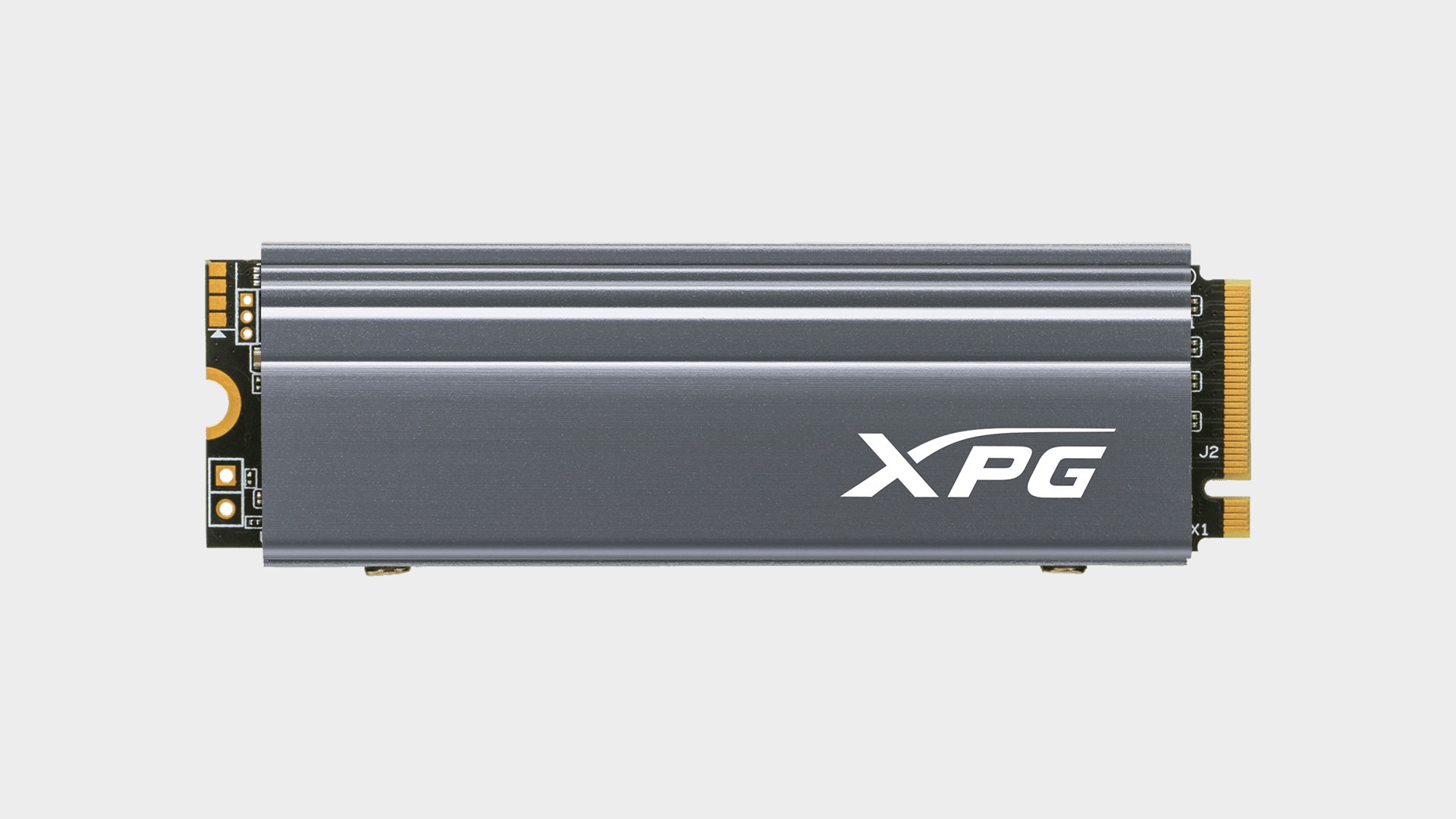
Dig a short deeper into the details, the Gammix S70 is powered by the InnoGrit IG5236 controller chipset, a relative fledgeling that has yet to prove itself against the more familiar with contention, most obviously the Phison E18. In truth, SSD controllers are largely black boxes whose central works are at Sunday-go-to-meeting opaque to end-users, Oregon at least those of them who don't undergo a Masters in integrated racing circuit design with a spare-time activity in the intricacies of NAND blink storage.
But, for the read, the InnoGrit IG5236 is a multi-core NVMe 1.4-compliant controller with eight memory channels a quad-lane PCIe 4.0 interface. It's also manufactured on TSMC's 12nm FinFET process, so IT's a fairly front slice of silicon, which bodes asymptomatic for efficiency and heat management. Information technology too supports some mechanics SLC caching and DRAM hive up. In this carrying out, Adata has gone for raised to 666GB of SLC hive up and 1GB of DRAM cache. Overall, the InnoGrit IG5236 certainly looks competitory on paper.
It's also worth noting that Adata says this drive will maintain a static bill of materials over its lifespan. In another words, major components like the controller and NAND flash back chips won't commute over the lifecycle of the drive. Buyers can be confident the upper-class and detailed specifications won't change, which hasn't ever been the event.
Finally, the Gammix S70 comes organized with a pretty stocky and hefty heat sink. Patc that ought to be a good matter when it comes to thermals and sustained execution, it's also ergonomically tricky. This M.2 push on is fat sufficient at 1.5cm tall that it might obstruct PCIe x16 slots and the fitting of graphics card game, depending on the precise layout of a given motherboard. It's something worth bearing in thinker.
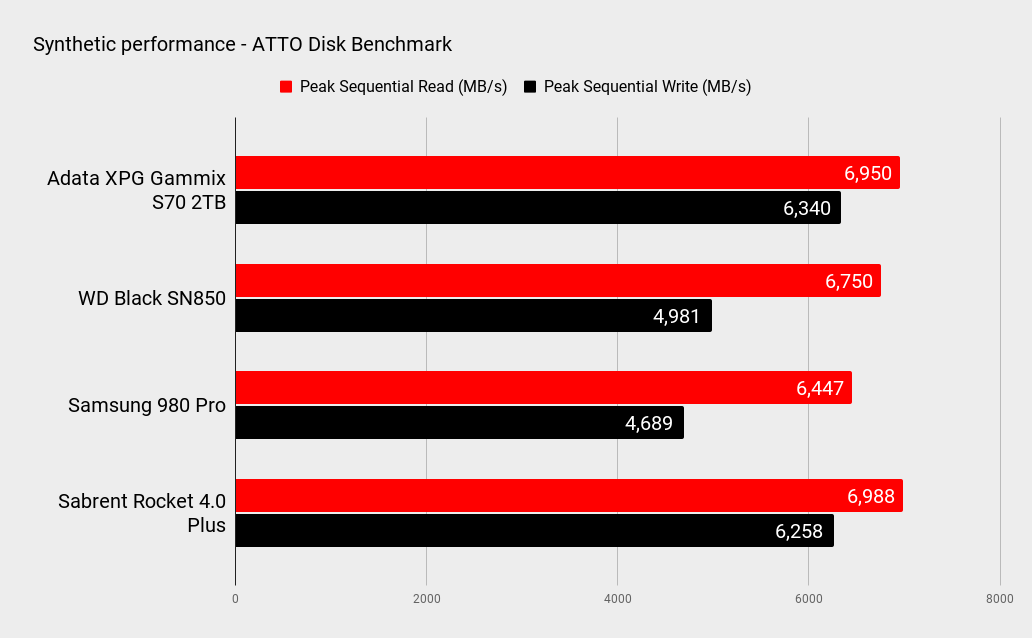
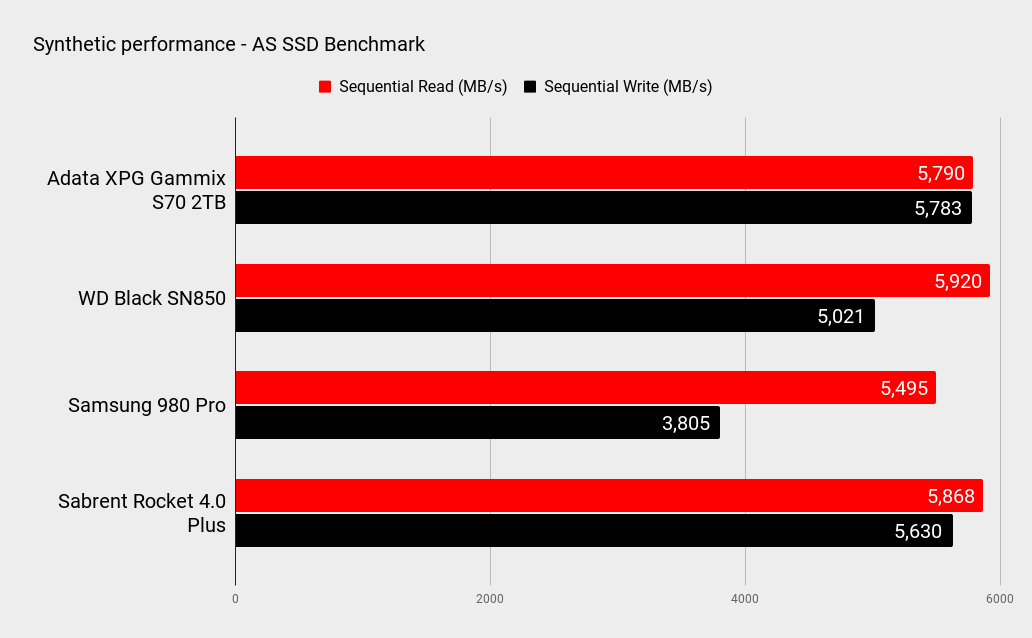

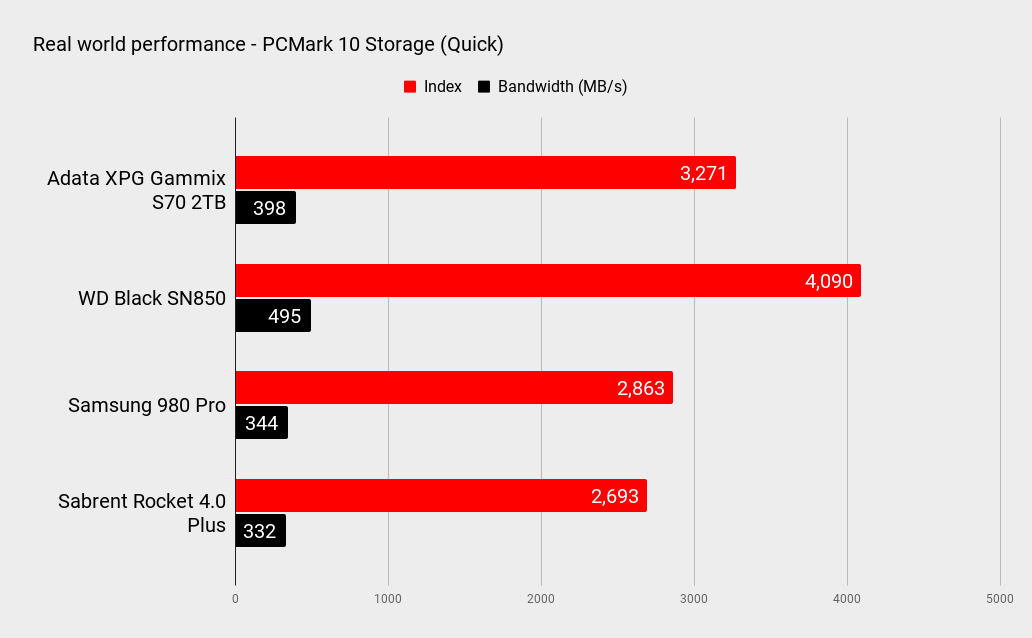
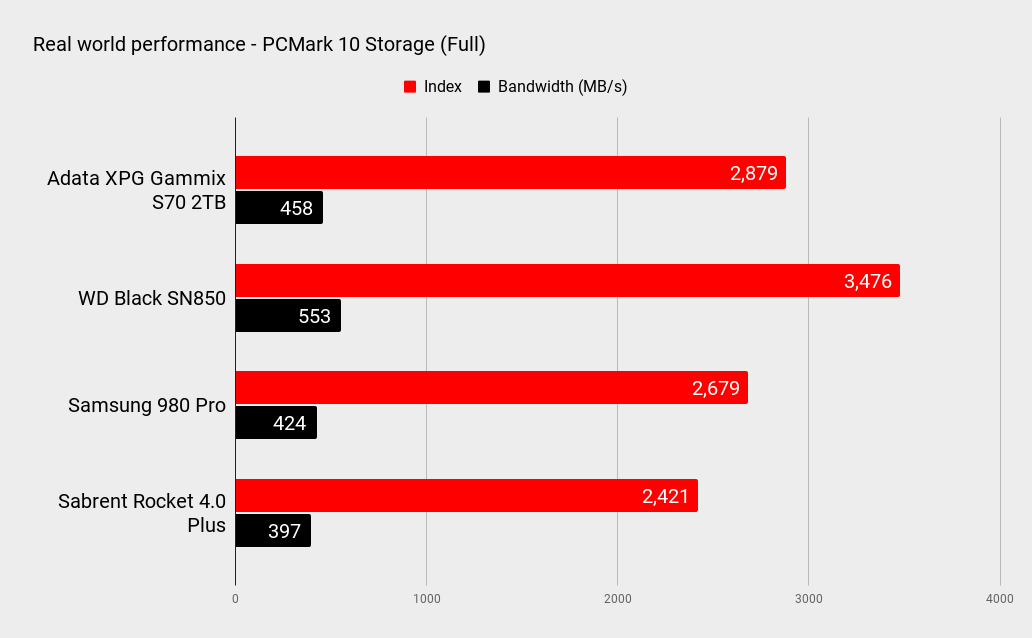


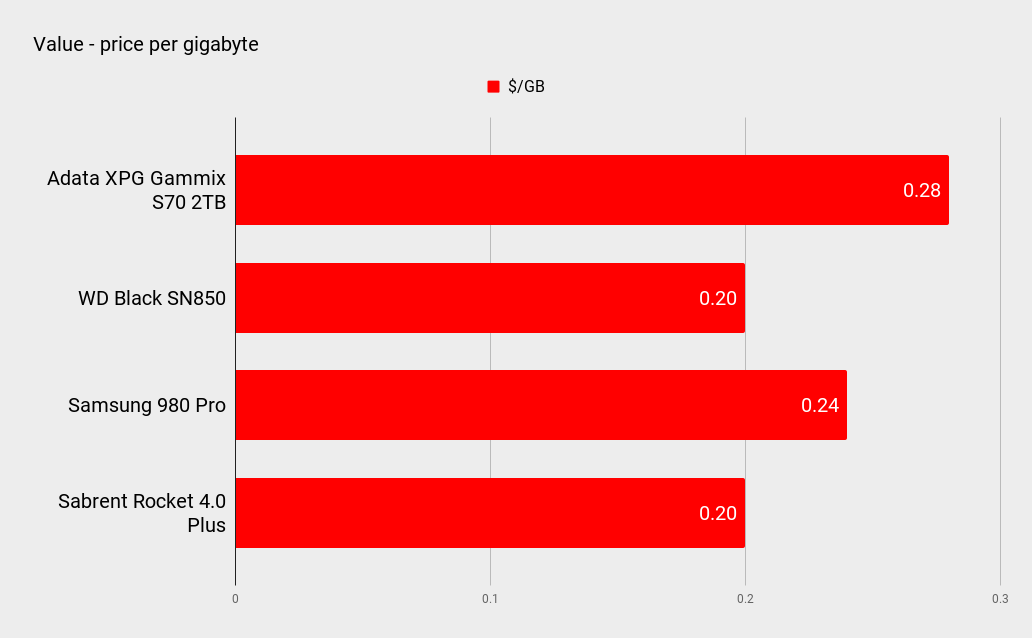
All of which is probably leaving you winded to feel out, well, just how fast this drive in reality is. On the raw sequentials, it's up there with the very best. At 6,950MB/s, information technology's about as fast a flash drive as we've tested. Only the Sabrent Rocket Plus edges it and and so only just. Meanwhile, information technology's actually the fastest drive we've test for writes at 6,340MB/s, albeit most of the contest was tested in slower 1TB configuration.
Of course, those peak numbers game reflect the performance on the motor in SLC cache style. In our intrinsical file copy examination, first performance kicks off at 1.8GB/s, falling to 1.1GB/s after the 600GB operating theatre so of SLC cache is exhausted. After about 750GB of writes, we found performance dropped a trifle further, fluctuating between 500MB/s and 750MB/s. That's adequate, but non astral.
Another aspect to file under 'slimly less impressive', and perhaps predictably indeed given the IOPS specs, is hit-or-miss 4K performance. At 66MB/s for reads and 202MB/s for writes and queue depth same, it's a sporty distance behind the likes of the WD Black SN850, which knocks unstylish 83MB/s and 274MB/s respectively.
As for how all that translates into real-humanity performance, for instance, game warhead times, in that location's of necessity not a lot in IT. The Gammix S70 is just half a second behind in the Final Fantasy XIV: Shadowbringers level load benchmark. In realness, then long as you have a half-decent modern SSD, most of the chokepoint regarding game load times lies elsewhere, though that may modify when Windows 11 arrives later this year and with it the Direct Storage engineering first seen on the Xbox Serial X.
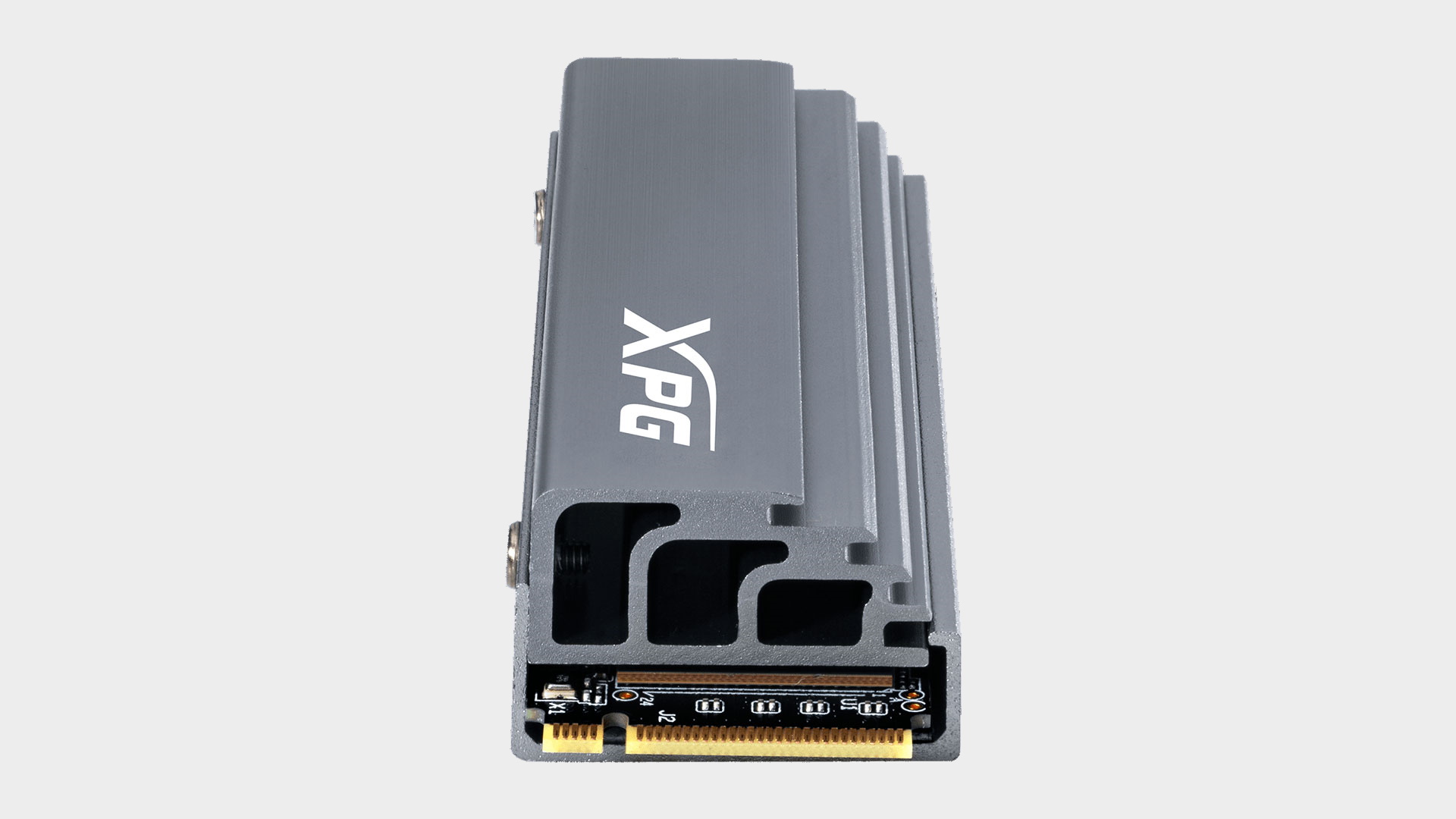
This is therefore certainly a worthy contender in the PCIe 4.0 SSD wars. Would we take it over the WD Opprobrious SN850? Only if it came at a significant discount. That may stable like inculpatory with faint praise. But the point is that this driving is good enough that we'd be happy to outpouring with it complete anything other provided it was priced right. As we pen these words, pricing is bad much on a par with the WD Black SN850, which makes the Gammix a hard sell. But if it gets just a little cheaper, things will represent same different.
Adata XPG Gammix S70 2TB
Adata's new PCIe Gen 4 repulse is a strong just not totally powerful wholly-rounder. It's a Tender loving care flash memory-based SSD that ticks whol the in-chief specification boxes and delivers excellent peak throughput but less spectacular random memory access execution.
Source: https://www.pcgamer.com/adata-xpg-gammix-s70-2tb-ssd-review/
Posted by: codycoved1936.blogspot.com


0 Response to "Adata XPG Gammix S70 2TB SSD review | PC Gamer - codycoved1936"
Post a Comment